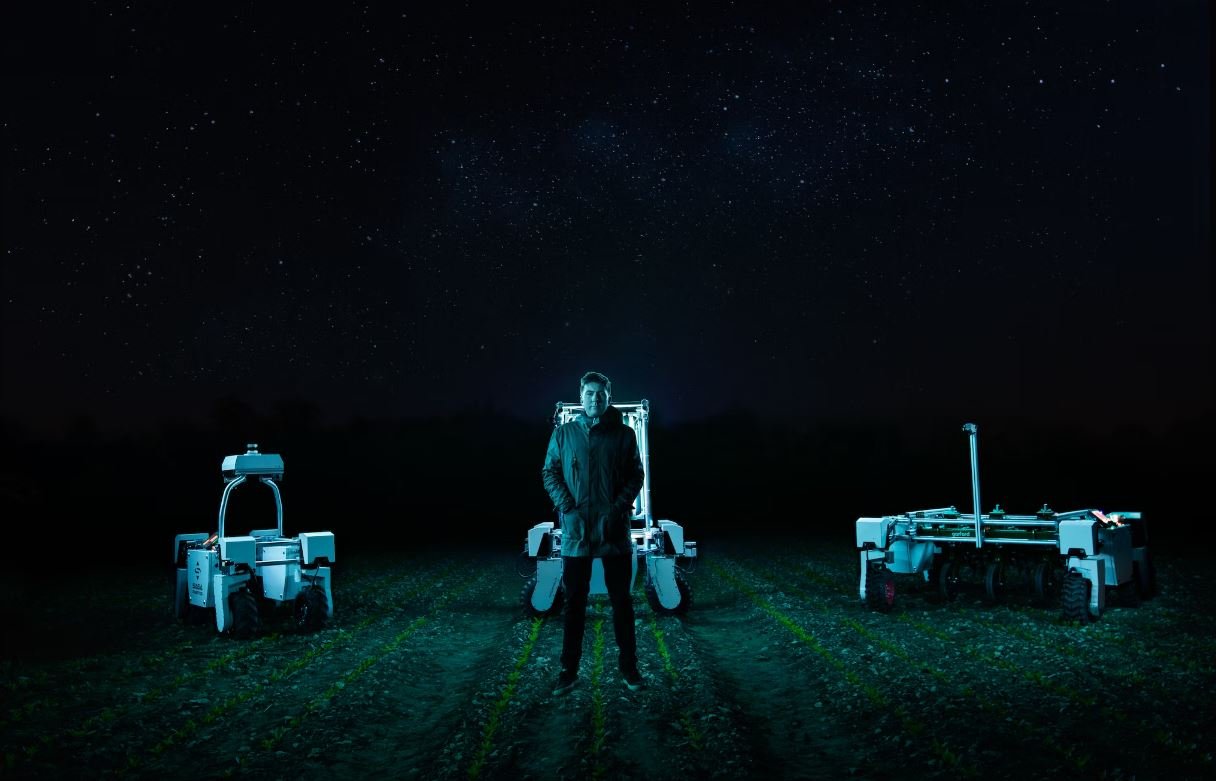What Is Dub Mean?
Introduction
In the world of music and entertainment, the term “dub” is often thrown around. But what exactly does it mean? Is it a genre? Is it a technique? In this article, we will explore the various meanings and uses of the term “dub” and uncover the fascinating history behind it.
Key Takeaways
- “Dub” is a term used in music and entertainment.
- It can refer to a music genre as well as a recording technique.
- The origin of the term can be traced back to Jamaican music.
- Dub has influenced various genres and continues to evolve in contemporary music.
The Origins of Dub
The term “dub” originated in Jamaica in the late 1960s and early 1970s. It can be traced back to the practice of manipulating and remixing reggae recordings. *This technique involved removing the vocals or emphasizing certain elements of the track,* creating an instrumental or version of the original song. This new version came to be known as a “dub” due to its emphasis on the instrumental elements. The practice of dubbing quickly gained popularity and became its own genre of music.
The Evolution of Dub
Over the years, the genre of dub has expanded and evolved. Initially rooted in reggae, dub has influenced a wide range of music genres, including hip-hop, electronic music, and even rock. Its unique recording techniques, such as echo and reverb effects, have been adopted by producers and artists across different genres. *Dub has become a vehicle for experimentation and sonic exploration,* pushing the boundaries of traditional music production.
The Significance of Dub
Dub serves as an influential force in the development of music. Its impact on the creation of remixes and extended versions of songs has shaped the way music is produced and consumed. *Dub has also influenced the rise of DJ culture* by providing DJs with instrumental tracks that they can manipulate and mix during live performances. Additionally, the artistic nature of dub has led to collaborations between producers and musicians from different genres, resulting in unique and innovative soundscapes.
Dub in Contemporary Music
In today’s music landscape, dub continues to thrive and inspire artists. Its techniques and aesthetics can be heard in various genres, from dubstep to ambient music. Producers and musicians embrace the creative freedom that dub offers, experimenting with different sound effects, mixing styles, and production techniques. *Dub has become a symbol of artistic innovation,* allowing artists to challenge traditional conventions and create their own sonic worlds.
Dub Fun Facts
| Fact | Description |
|---|---|
| The first dub album | The first dub album ever released was “King Tubby Meets Rockers Uptown” by King Tubby in 1976. |
| Dub in film | Dub techniques have also been used in film soundtracks to enhance the atmosphere and create immersive experiences. |
Conclusion
In conclusion, the term “dub” encompasses both a music genre and a recording technique that originated in Jamaica. It has had a profound impact on the music industry, influencing various genres and encouraging artistic experimentation. Dub continues to evolve and inspire artists, serving as a symbol of creative freedom and innovation in the world of music.

Common Misconceptions
Misconception 1: Dub Mean is short for WMD (Weapons of Mass Destruction)
One common misconception is that the term “Dub Mean” is an acronym for “Weapons of Mass Destruction.” However, this is incorrect as Dub Mean is actually a term widely used in music production. Let’s clear up this misunderstanding:
- Dub Mean is a subgenre of electronic dance music, characterized by heavy bass and a slow tempo.
- The term “Dub Mean” originated from the Jamaican style of mixing music, where tracks are stripped down and then reconstructed with added effects.
- Dub Mean became popular in the late 1990s and early 2000s, and has since gained a significant following worldwide.
Misconception 2: Dub Mean is the same as Dubstep
Another misconception is that Dub Mean and Dubstep are the same genre of music. While they share some similarities, they are distinct from each other:
- Dub Mean emphasizes a slower tempo and heavy bass, while Dubstep focuses on aggressive and intense bass drops.
- Dubstep often features more intricate rhythms, while Dub Mean tends to be more minimalist in its approach.
- While both genres evolved from Jamaican Dub music, their sound and characteristics differ significantly.
Misconception 3: Dub Mean is only popular in Jamaica
Some people mistakenly assume that Dub Mean is exclusively popular in Jamaica and among Jamaican artists. However, this is not the case:
- Dub Mean has a diverse international following and has spread far beyond Jamaica.
- Artists from various countries, such as the United Kingdom, Germany, and the United States, have embraced and contributed to the Dub Mean genre.
- While Jamaica has undoubtedly played a significant role in the development of Dub Mean, its popularity is not limited to one geographic location.
Misconception 4: Dub Mean is always instrumental
One common misconception is that Dub Mean music is always instrumental and does not feature any vocals. However, this is not entirely true:
- While Dub Mean traditionally focuses on instrumental tracks, there are also vocal versions that incorporate elements of reggae or dub poetry.
- Vocalists may add their own lyrics, melodies, or even freestyle verses over Dub Mean beats.
- Both instrumental and vocal versions of Dub Mean can coexist, and artists have different ways of expressing themselves within the genre.
Misconception 5: Dub Mean is only meant for underground music enthusiasts
Lastly, there is a misconception that Dub Mean is only intended for a niche audience or underground music enthusiasts:
- Dub Mean has gained widespread popularity and has crossed over into mainstream music, with many artists incorporating Dub Mean elements into their productions.
- Major music festivals around the world regularly feature Dub Mean artists on their lineups, attracting large audiences.
- While it remains beloved by fans of electronic music, Dub Mean’s influence extends beyond the underground scene.

Introduction
Dub is a term commonly used in music, particularly in the genre of reggae. It refers to a style of remixing where the original vocal track is stripped away or heavily manipulated, and the emphasis is placed on the instrumental and rhythmic elements. Dub has a rich history and has influenced various music genres around the world. In this article, we will explore different aspects of dub and its impact. Each table exhibits intriguing facts and information related to the topic.
Table: Notable Dub Producers
The table below showcases some influential dub producers and their notable contributions to the genre.
| Producer | Notable Work |
|———————-|——————————————————————|
| Lee “Scratch” Perry | “Super Ape” (album), Black Ark Studios |
| King Tubby | “Dub from the Roots” (album), Waterhouse Studios |
| Scientist | “Scientific Dub” (album), King Tubby’s Studio |
| Mad Professor | “Dub Me Crazy” (series of albums), Ariwa Studios |
| Adrian Sherwood | “On-U Sound” (record label), Sherwood’s Dub Syndicate |
Table: Dub Techniques
This table presents notable dub production techniques that have become synonymous with the genre.
| Technique | Description |
|—————–|—————————————————-|
| Echo | Repetition of sound with gradually fading trails |
| Reverb | Space emulation through sound reflection |
| Filter | Manipulation of frequency content |
| Delay | Repetition of sound with precise timing |
| Dubsiren | Use of a dedicated instrument for sound effects |
Table: Dub Characteristics
The following table highlights key characteristics that define the dub style of music.
| Characteristic | Explanation |
|——————–|———————————————————–|
| Heavy basslines | Pronounced low frequencies, driving the rhythm |
| Use of space | Emphasis on spatial sound, creating depth and atmosphere |
| Instrumentation | Focus on the instrumental elements rather than vocals |
| Skanking rhythm | Offbeat guitar or keyboard patterns |
| Sound effects | Incorporation of distinctive sound effects |
Table: Dub Influence in Hip Hop
This table discusses the impact of dub on the development of hip hop music.
| Artist | Notable Work |
|——————–|———————————————|
| Afrika Bambaataa | “Planet Rock” (song), Zulu Nation |
| The Sugarhill Gang | “Rapper’s Delight” (song), Sugar Hill Records|
| Grandmaster Flash | “The Message” (song), Grandmaster Flash & The Furious Five |
Table: Dub Reggae Fusion Bands
Explore some influential bands that combine elements of dub and reggae in their music.
| Band | Notable Work |
|———————–|———————————————————-|
| Easy Star All-Stars | “Dub Side of the Moon” (album), “Radiodread” (album) |
| Thievery Corporation | “The Cosmic Game” (album) |
| Israel Vibration | “The Same Song” (album), “Unconquered People” (album) |
| Dub Syndicate | “Tunes from the Missing Channel” (album), “Stoned Immaculate” (album)|
Table: Dubstep Artists
The table showcases renowned artists in the genre of dubstep, which evolved from dub.
| Artist | Notable Work |
|———————-|—————————————————————|
| Skream | “Midnight Request Line” (song), “Outside the Box” (album) |
| Benga | “Night” (song), “Diary of an Afro Warrior” (album) |
| Mala | “Alicia” (song), Deep Medi Musik |
| Digital Mystikz | “Anti War Dub” (song), “Return II Space” (album) |
| Rusko | “Cockney Thug” (song), “OMG!” (album) |
Table: Dub Techniques in Electronic Music
This table explores the adoption and influence of dub techniques in the realm of electronic music.
| Artist | Notable Work |
|———————-|—————————————————————|
| The Orb | “Little Fluffy Clouds” (song), “Adventures Beyond the Ultraworld” (album) |
| Aphex Twin | “Selected Ambient Works 85-92” (album) |
| Burial | “Untrue” (album), “Rival Dealer” (EP) |
| Four Tet | “There Is Love in You” (album), “Rounds” (album) |
| Bonobo | “Migration” (album), “Black Sands” (album) |
Table: Notable Dub Music Festivals
Discover popular music festivals dedicated to celebrating dub and related genres.
| Festival | Location |
|————————-|——————————–|
| Outlook Festival | Pula, Croatia |
| Rototom Sunsplash | Benicàssim, Spain |
| Dubwise Festival | Amsterdam, Netherlands |
| Uprising Reggae Festival | Bratislava, Slovakia |
| Reggae Geel | Geel, Belgium |
Conclusion
In the realm of music, the genre of dub has left an indelible mark with its unique remixing techniques, heavy basslines, and focus on instrumental elements. From the early pioneers like Lee “Scratch” Perry and King Tubby to the fusion of dub with other genres like hip hop and electronic music, its influence spans far and wide. Through the tables presented in this article, we have delved into the world of dub, highlighting its key figures, techniques, characteristics, and its impact on various musical landscapes. Let us continue to embrace and explore the captivating realm of dub as it continues to evolve and inspire future generations.
Frequently Asked Questions
What is the meaning of “Dub”?
What does “Dub” mean in the context of entertainment?
Why is dubbing used?
What are the benefits of dubbing in entertainment?
How is dubbing done?
Can you explain the process of dubbing?
Is dubbing only used in movies and TV shows?
Can dubbing be found in other forms of entertainment?
Are dubbed versions of movies and shows always accurate?
Does dubbing always provide an accurate translation?
Is watching a dubbed version better than using subtitles?
Which is better: watching a dubbed version or using subtitles?
Can dubbing affect the original artistic intentions?
Does dubbing alter the original artistic intentions of a movie or show?
How can I find dubbed versions of movies or shows?
Where can I find movies or shows with dubbed versions?
Are there different levels of quality in dubbing?
Is there a variation in the quality of dubbing?
Can I become a voice actor for dubbing?
Can I pursue a career as a voice actor in dubbing?




